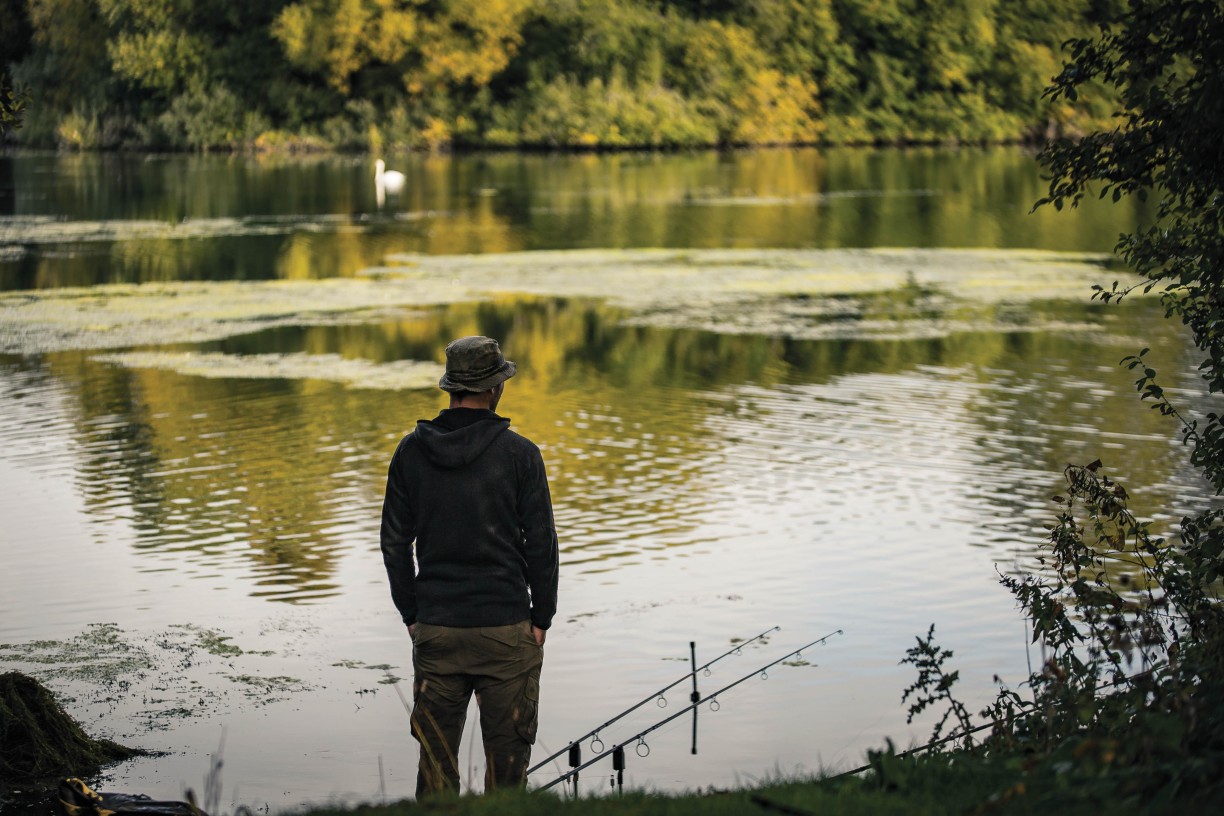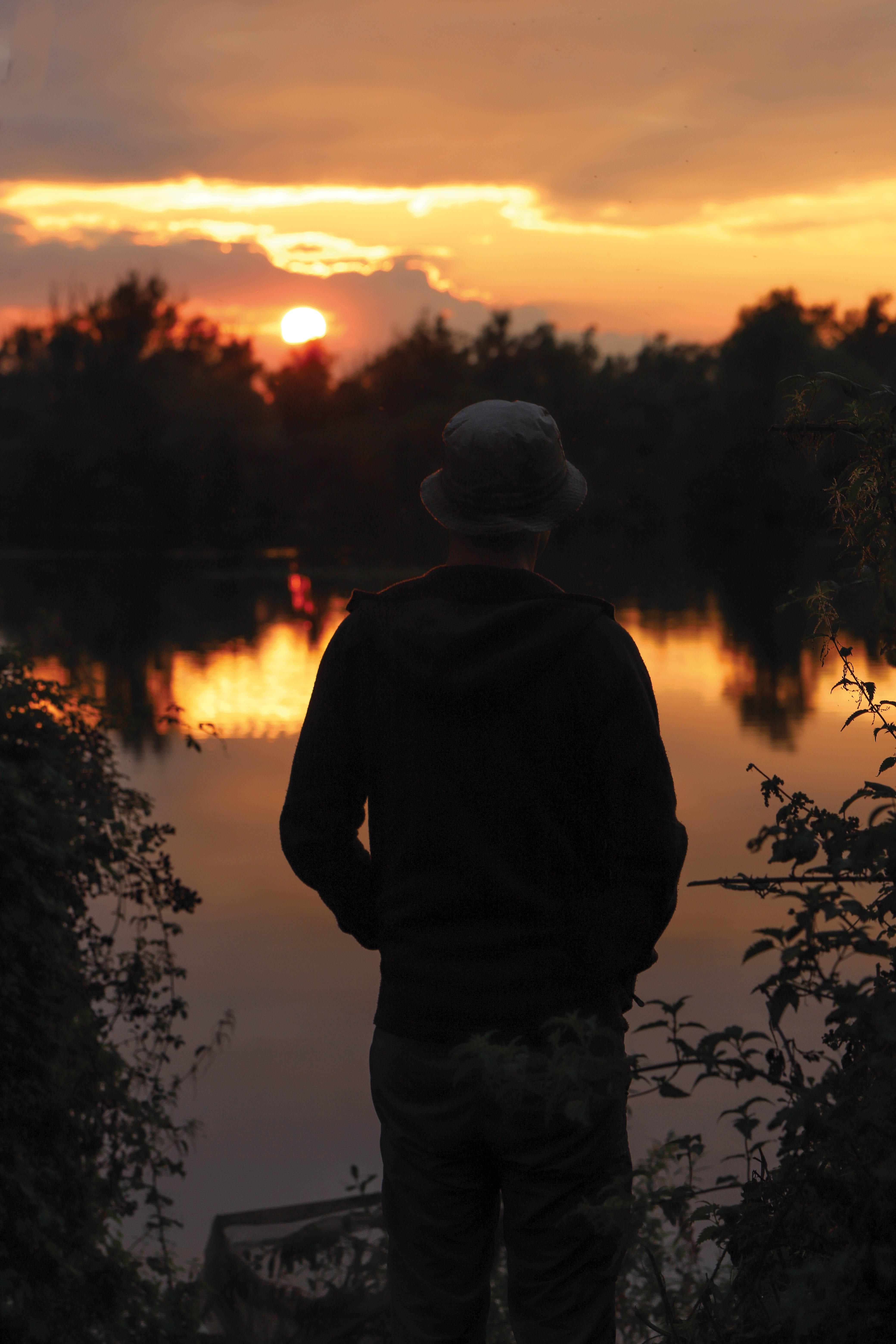We Need To Talk About... Watercraft
Are you guilty of heading straight to the hot swim and casting out the new bait you saw your favourite celebrity promoting on their last Insta post, attached to the latest wonder rig?

Do you try to improve your watercraft, and employ it every time you turn up at the lake? Or is the abundance of information available 24/7 on social media, the constant heads up on who’s catching what from where, turning you into a carping zombie? Are you guilty of heading straight to the hot swim and casting out the new bait you saw your favourite celebrity promoting on their last Insta post, attached to the latest wonder rig? It’s okay, I think we all do it, in moments of weakness, when we’re tight for time, desperate for a bite, not feeling a 100%. But I say we must fight this descent into unthinking robotic behaviour, and remind ourselves we are noble Brothers of the Angle, practising an ancient and glorious art.
As Izaak Walton wrote back in 1653: “Doubt not that angling is an art. The question is whether you be capable of learning it… he that hopes to be a good angler, must not only bring an enquiring, searching, observing wit, he must bring a large measure of hope and patience, and a love and propensity to the art itself.”
Watercraft is undoubtedly an advanced practice, but it’s not magic, reserved for residents of Hogwarts, out of reach to muggles. Watercraft, as I understand it, is the ability to bring to any angling situation a hard-earned depth of knowledge and experience about the multiple influences on carp behaviour, combined with intense observation skills. It’s something the very best carp anglers work hard to develop, constantly drawing upon it to ensure they are fishing effectively. They combine this with other essential qualities such as high levels of determination, dedication, technical skill and attention to detail. Watercraft can seem like a supernatural force at times, but we can learn how to improve ours by watching top anglers in action.
For example, I’ve learnt loads from watching Joe Morgan’s tactics on St Ives. Joe is constantly on the lookout for an opportunity, putting in the miles, making moves that put him on the fish and mean he catches more than most. It’s very tempting to sit on Meadow or Longreach day after day hoping they’ll turn up, but believe me, a season can quickly slip away if you’re not on it, looking to ring the changes.
I witnessed this first-hand when Joe was sitting on the Road Bank of Meadow last year in the middle of an impressive spell of bites. The next morning, he was on the move, leaving the hot swim. I was perplexed, but his eyes on the water approach had clocked them 300yd away on the opposite bank. A quick move resulted in two afternoon bites in his new hot swim: a 44 and the Brown at 50+.

It’s not always about moving. Some lakes require a different approach. I remember when Dave Lane started fishing Shallow Pit, he was regularly packing up in the morning waiting for a sign and moving onto the fish. Yes, he caught a few chasing them around, we’re talking Dave Lane here, but slowly I saw his approach change. Towards the end of his time on there, he focused on one swim, one he observed the fish visiting regularly, one he was sure Queen of the Lake, Colin, would do a bite (unusual name for a girl, but I respect her right to identify as a boy). And at this point another watercraft technique came into play: keeping your cards close to your chest.
Yes, at times, watercraft also includes out manoeuvring the other anglers. Dave was working the swim, keeping his catches as quiet as possible. And when Colin came out to another angler, he didn’t leave like everyone else, he concluded Colin could do a second bite, which she, he, it did—job done and top watercraft!
Last autumn, Oz Holness and Tom Stokes fished the Lagoon for the first time on a 48hr filmed Cypography session. Despite being hampered by a super busy lake, they arrived early, put in the leg work and tracked down signs of fish. What also impressed me was their attention to detail, identifying the exact features to fish in their swims, as well as the technical ability to fish them accurately and effectively. Both caught, on what can be a tricky lake when you have fished it for several years let alone just a day, including the magnificent 35+ Box Common for Oz.
I guess the reason mastering watercraft can sometimes seem out of reach is because it cannot be taught in a day or two, it’s something you have to learn over a period of years. There’s a saying that goes, some people who have fished for ten years have one year’s experience repeated ten times, others have ten years’ experience. You need to slowly build your knowledge and skill base.
The best watercraft practitioners rarely miss a sign, be it a show, a few bubbles, or a bird disturbed by some carpy subaquatic occurrence. It is clearly no coincidence that those who are up before dawn, ready to move at any time of day or night if they feel it will improve their chances of catching, bank more carp. As the joke goes, the harder I work, the luckier I get!
And now we come to a subject which divides opinion, and maybe sorts out the elite watercraft practitioners from bluffers like me. Are you a super sniffer, blessed with a highly sensitive hooter? Okay, I’ll come straight out with it: can you smell carp in a swim? No, nor can I. But apparently some people can, and scientifically speaking it’s entirely plausible that molecules emanating from slimy carp could leave the water and drift up a carp whisperer’s snout. Alas, not me, I firmly identify as olfactorially challenged!
I’ve heard Jim Shelley talk about watercraft as hunting skills. And I think he’s spot on. A hunter will bring everything they know to bear on the task of tracking and capturing their chosen prey, every observation and pattern they’ve noticed. Some anglers do this instinctively, but not being naturally gifted in the watercraft department, I tend to go for a more analytical approach. Here are some of the factors I think you need to understand, assess and combine to master watercraft:
Air temperature, cloud cover, air pressure, wind speed and direction, dissolved oxygen levels, water depth, water temperature, algal blooms, invertebrate hatches, stocking density, other fish species, birdlife activity, gravel bars and patches, silt beds, clay spots, weedbeds, angling pressure, time of day, time of year, snags, marginal cover, patrol routes, shows and bubbles.
Oh yes, it’s COMPLEX! And with so many variables involved, the influence on carp location and behaviour changes almost second by second, which probably goes some way to explaining why carp fishing can be so bewildering, fascinating and exhausting.
In conclusion, watch what good anglers do, reflect on your own experience and apply it to your next session. Don’t be afraid to make mistakes, they provide valuable lessons. And crucially, learn from other people’s mistakes: Life’s too short to make them all yourself!



